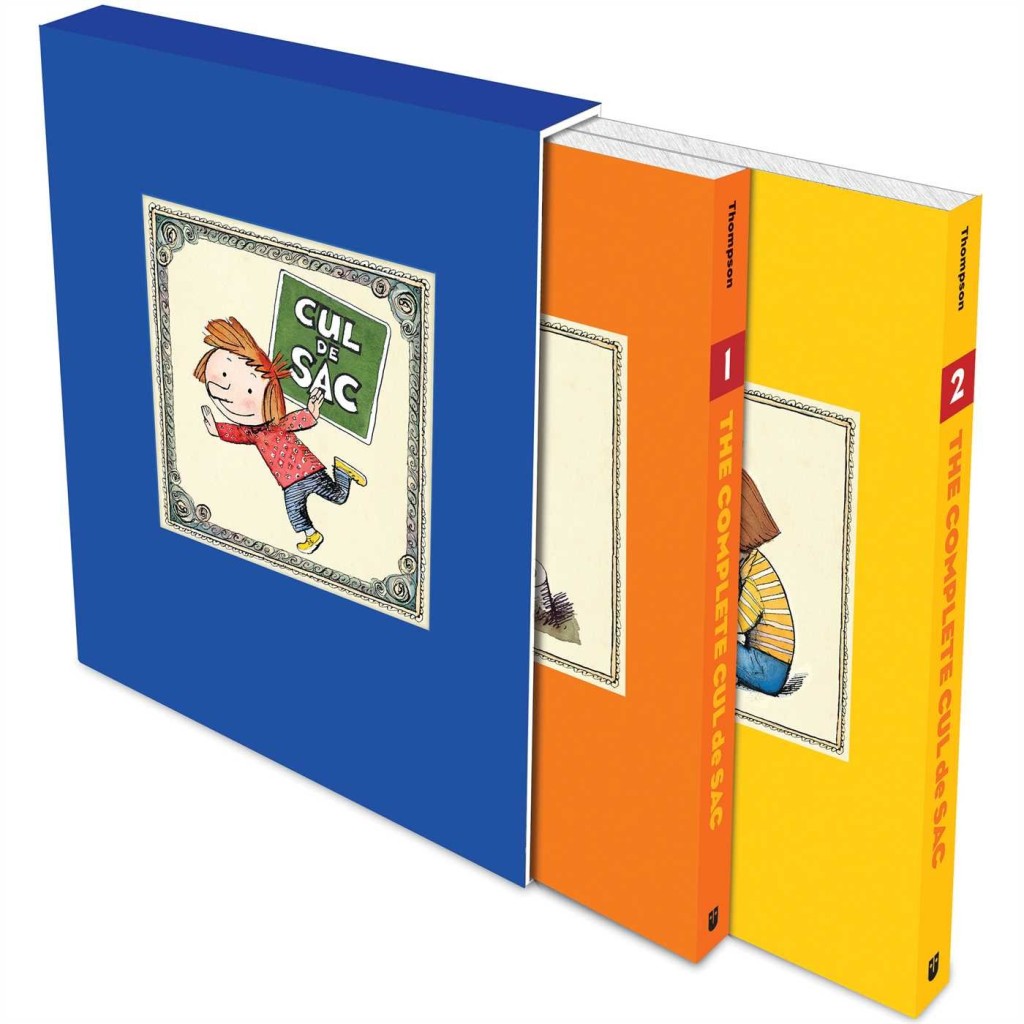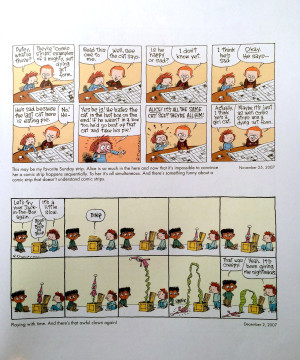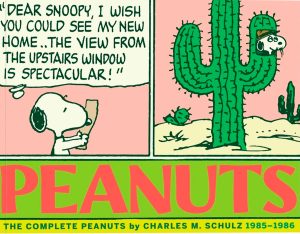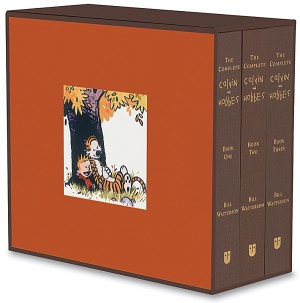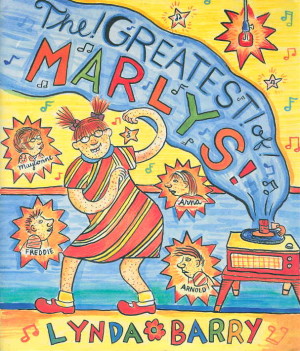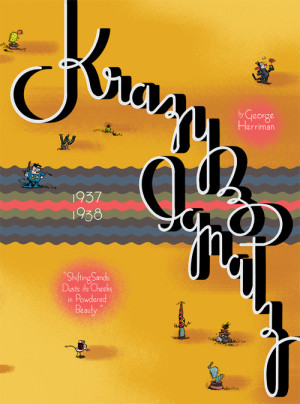Review by Woodrow Phoenix
Richard Thompson’s Cul de Sac was first published in The Washington Post in February 2004. It went on to become a nationally syndicated newspaper strip across the USA in September 2007. It gathered tremendous, enthusiastic praise from many fans, and recognition including Reuben, Eisner and Harvey Awards. Increasing complications from Parkinson’s Disease meant that Thompson was unable to continue the strip, and it ended in September 2012.
Cul de Sac is based around the Otterloop family, specifically hyperactive four year-old Alice and her older brother Petey who is obsessive about almost every facet of his life, but especially food (“Does Petey know that food comes from dirt?” asks Alice. “We haven’t told him,” her mother replies, “so please don’t say anything”). Among others who feature in the cast are Dill, the youngest of a large number of brothers, Beni, who has one long eyebrow, Ernesto who may or may not be a hallucination from Petey’s overactive mind, and there’s also Mr Danders, a preternaturally intelligent guinea pig.
The Complete Cul de Sac is a set of two large softcover volumes in a slipcase. It reprints all of the syndicated strips, beginning with a selection of the pre-syndication Cul de Sac Sunday pages produced for the Washington Post magazine. These were watercoloured, and their delicate variation of tone and colour gives them an atmosphere that the later flat colouring of syndicated Sundays can’t match – compare the strip on page two of volume one to the revised version on page 46 (the watercolour Sundays return in volume two). A bonus is that many of the strips are annotated with a line or two of commentary by Thompson that adds little insights into the characters and situations, often with an extra joke.
Cul de Sac is initially a little difficult to get into because of its strongly self-aware construction. It’s a comic strip that comments on its own existence. The characters have conspicuously ‘funny’ names and often have conversations at an ironic distance as if they are explaining their own motivations. What stops all this meta humour from becoming oppressive is Thompson’s wonderfully expressive cartooning. He creates a vivid, odd world, filled with hilarious and ludicrously warped versions of everyday situations for his cast to inhabit. The drawing is so good that the density of words, characters, settings, jokes and recurring themes merge into a seamless blend of erudite silliness that’s endearing and very funny. Two strips that represent both extremes of Richard Thompson’s approach appear on page 71 (shown here in the sample image). In one of Cul de Sac‘s most frequently quoted and reproduced Sunday pages, Petey tries to read a comic strip to Alice who can’t slow down enough to take it in; the second, equally brilliant Sunday strip is an expertly choreographed piece of pure joyous slapstick.
The Complete Cul de Sac is introduced by Art Spiegelman, author of Maus and co-editor of Raw. Unfortunately he delivers a terribly self-indulgent and pointless ramble over five long shapeless pages, just barely redeemed by an excellent anecdote about Thompson in the final three paragraphs. Don’t read it first – come back to it later, or you’ll be too distracted wondering about how on Earth it was printed to enjoy the beginning of this superb collection.
Richard Thompson’s work and his life was cruelly cut short by Parkinson’s Disease, but his Cul de Sac remains as an absolute treasure. It’s as absorbing, idiosyncratic and powerfully inventive as Calvin and Hobbes or Peanuts, and it will just get better with time.
